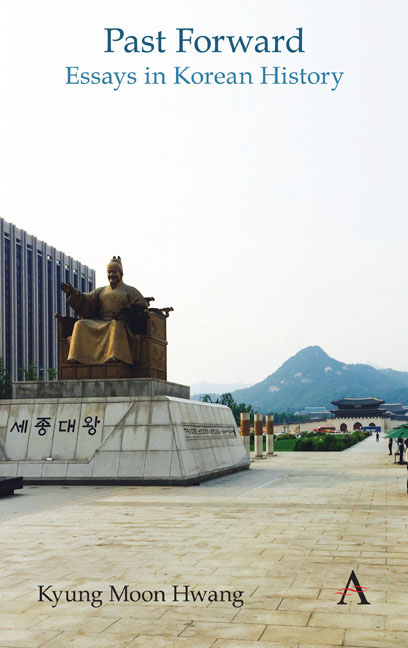Book contents
- Frontmatter
- Contents
- List of Figures
- Foreword
- Chronologies of Korean History
- Themes
- Acknowledgments
- Note on Romanization and Spelling
- Part I Circulating History
- Part II Durable Traditions
- 8 Marking the New Year
- 9 Slavery, Bondage, and Social Hierarchy
- 10 Marriage, Adultery, and Concubinage
- 11 Buddhism and Korean Identity
- 12 Christianity's Rapid Rise
- 13 Civil–Military Balance in Politics
- 14 Regionalism in Elections
- 15 Yeongnam's Strong Presidential Politics
- Part III Ancient Remains
- Part IV Dynastic Depths
- Part V Modern Origins
- Part VI Challenges of Nationhood
- Part VII History Makers
- Part VIII External Presences
- Part IX Trials of Modernization
- Part X Gripped by the Past
- Index
14 - Regionalism in Elections
from Part II - Durable Traditions
- Frontmatter
- Contents
- List of Figures
- Foreword
- Chronologies of Korean History
- Themes
- Acknowledgments
- Note on Romanization and Spelling
- Part I Circulating History
- Part II Durable Traditions
- 8 Marking the New Year
- 9 Slavery, Bondage, and Social Hierarchy
- 10 Marriage, Adultery, and Concubinage
- 11 Buddhism and Korean Identity
- 12 Christianity's Rapid Rise
- 13 Civil–Military Balance in Politics
- 14 Regionalism in Elections
- 15 Yeongnam's Strong Presidential Politics
- Part III Ancient Remains
- Part IV Dynastic Depths
- Part V Modern Origins
- Part VI Challenges of Nationhood
- Part VII History Makers
- Part VIII External Presences
- Part IX Trials of Modernization
- Part X Gripped by the Past
- Index
Summary
Upon first glance, the map of the April 2016 general election results for the National Assembly looked similar to immediately preceding ones, in which the contiguous territory of the conservative party's geographical strongholds looked like the vowel “eo” in the Korean alphabet. The other two blocks represented, respectively, the capital region and the Jeolla provinces (colloquially known as Honam), which previously often showed a common preference, but not this time.
Indeed upon closer inspection, the election map suggested that familiar regional patterns were starting to break down, especially in the major cities. Of course in industrialized democracies often the most important factor in elections is the economy, particularly the employment market, the price of everyday goods and other pocketbook issues. And the 2016 election suggested that the chronic financial insecurity of younger citizens pushed them to the polls to voice their displeasure with the ruling party. Furthermore, one is inclined to believe that the 2014 Sewol ferry tragedy, the second anniversary of which approached during the election campaign, framed the political perspective of many grieving citizens. Still, South Korean electoral behavior continued to reflect ingrained regional identities formed over decades, if not centuries or even millennia.
While it is tempting to consider rivalries that originated as far back as the Three Kingdoms era of 1,500 years ago, which the electoral maps somewhat resemble, the more reliable historical connections are to recent periods. We can begin with the Gyeongsang provinces, or Yeongnam, the former territory of ancient Silla but more importantly the long-standing bastion of Confucian orthodoxy, even when this fierce identity sometimes deprived this region of national political power in the Joseon era (1392–1897). These residents’ conservative inclinations also led to a slower embrace of modern change in the late nineteenth and early twentieth centuries, which matched well the anticommunist, authoritarian streak of the military figures from Yeongnam who ruled South Korea from the 1960s to the 1980s. These dictatorships established a corridor of industrial development connecting Gyeongsang to the capital region while largely excluding the Jeolla provinces, or Honam. And the political, bureaucratic and economic favoritism enjoyed by Yeongnam cemented its ideological leanings, as seen in electoral behavior that defied the liberalizing impact of democratization.
- Type
- Chapter
- Information
- Past ForwardEssays in Korean History, pp. 39 - 41Publisher: Anthem PressPrint publication year: 2019



